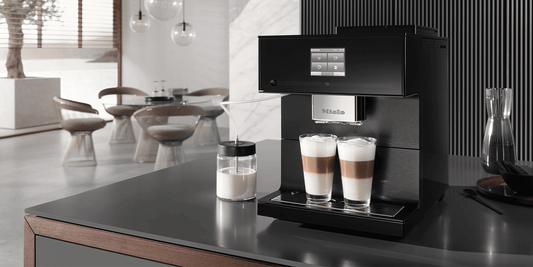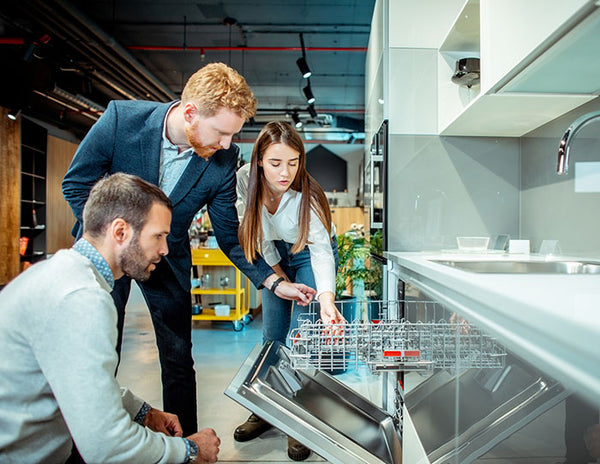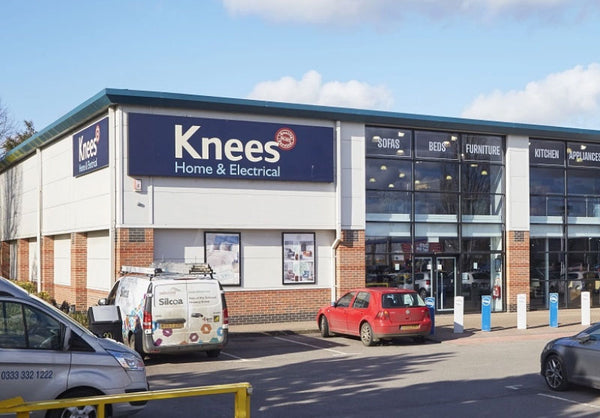Choosing the best bean to cup coffee machine
Make your morning coffee with ease with this buyers guide
The heyday of coffee drinking, at least in the UK, began at the end of the 17th century when the first coffee houses appeared in cities and towns all over the country. Arguably, coffee is even bigger news today, with huge multi-national chains and artisan independents competing in a flourishing market. At the same time, there has been a huge increase in demand for ways of recreating the coffee shop experience at home, producing the same quality but with greater convenience and lower costs.
Four types of machine have been developed for home use, with pods, filters and espresso makers all selling well, but most connoisseurs would agree that when buying a coffee machine bean to cup is the best option. A bean to cup coffee machine is fully automatic and grinds coffee beans freshly for every cup. It also heats the water and milk to the ideal temperature for the perfect brew. Find out more about how to buy the best bean to cup coffee machine in this guide.
How to choose the best bean to cup coffee machine
When you’re ready to invest in a coffee machine, you’ll find a lot of choice in terms of price and functions. Many of the highest-profile household brands offer a selection of models, including Delongi, Miele, Smeg and Bosch. There are also plenty of mid-price and budget options, but there are certain features that you should always check and compare before buying. Whatever your budget, you ought to aim for the best quality and broadest functionality you can afford.
What coffee do you prefer?
If you drink espresso, then any bean-to-cup will make a decent one but if you want choice, you will want one that isn’t limited to espresso only.
Budget
A basic machine will probably cost you about £100 but for a good entry-level one, you should be prepared to stretch to at least £200. That may sound expensive but it will last longer and perform better. Importantly, if you take the average price of a coffee in a high street chain to be about £3.00 then if you make just one a day you’ll have made the money back in a little over two months.
Functions
Bean-to-cups have become sophisticated machines, some of them capable of grinding at 15 different levels of coarseness. Variable valve pressure and automatic tamping are other useful features worth considering. A true enthusiast will only be happy when they have a bean to cup coffee machine with milk frother, as this is an essential element of the drink and an integrated frother is by far the easiest means of creating the right effect. The most advanced machines can even produce exotic coffees such as a latte macchiato espresso, which is surely a coffee drinker’s idea of heaven. It is worth carefully checking all the functions available rather than assuming an essential function is included.
Space
Bean to cup machines are the largest of the four types of coffee machine so it is important to have sufficient space on your kitchen surfaces to accommodate one – you want it to be permanently ready for use, not stuck away in a cupboard. Cheaper machines will tend to be smaller but if you have enough space, this shouldn’t be the decisive factor. It is possible to have a machine built into your kitchen in the same way as a microwave, thereby leaving the work surfaces clear, but obviously, this involves installation, plumbing and possibly even a new kitchen unit. The best time to do this is when you’re having a kitchen refit, so it’s worth planning ahead.
Bean hopper size
This will depend on the number of cups you expect to be making at any one time. If it is just a few cups, then anything from 200-300 grams will be large enough, but it’s possible to buy different sizes up to 2kg, which will make a lot of coffee. If you do opt for a larger model, you can use the hopper for storage. However, opinion is divided on the wisdom of this, since a hopper is not airtight and the quality of beans stored in this way for any length of time, even a few days, could decline. Amongst connoisseurs there are those who adhere strictly to the weigh-and-grind one shot at a time principle and others who are happy to put three days’ worth in the hopper. We’d say that’s probably the absolute maximum. So choose your hopper to suit your level of use rather than as a storage shortcut, because an airtight container is always a better option.
Water reservoir
Here’s another question about size. It may be tempting for the sake of convenience to use a large reservoir and keep it filled with water. It means there’s one job less to do when it comes time to make your coffee. But science is against this. Fresh water doesn’t go off, of course, but neither does it stay fresh and if it has been sitting in the reservoir for a week, it will reduce the flavour of the coffee. Convenient, but compromised. As a rule of thumb you should make a point of changing the water every two or three days.
It’s also advisable to clean the reservoir regularly to avoid the build-up of limescale and other contaminants. This brings us to another consideration, which is whether to choose a model with a removable reservoir. It’s a matter of personal choice of course, but it is easier to clean a removable one. It is also easier to fill.
Controls and display
We are all accustomed to intuitive controls and digital displays on our home appliances and while we wouldn’t suggest that this is one of the most important features, digital indicators are very helpful. They don’t improve the taste of the coffee, of course, but they can ease the process by making it easy to check factors such as the water level, the status of the machine and the stage it’s reached in the brewing process.
Wi-Fi and the internet of things
Just a few years ago, the notion of kitchen appliances with Wi-Fi capability seemed far-fetched but it is now a reality. Far from being an amusing novelty it can be very useful. Many machines will have timer functions so you can pre-set your machine to start making your coffee while you’re on the way home, or before you get out of bed, but with a Wi-Fi connection, you can send it instructions whenever you like. Provided that there are beans in the hopper and water in the tank, the machine is forever on standby. And as the Internet of Things grows, this particular functionality will allow you to automate your ordering process. Just as your printer cartridges arrive when the ink is getting low, so can your new supply of coffee beans almost magically materialise.
Cleaning and maintenance
Everyone’s least favourite part. But it is important to keep your machine clean and properly maintained. It is a substantial investment and a very important lifestyle device so you want to keep it in perfect working order. Manual cleaning is effective but time-consuming and an altogether grim experience. If you can stretch to it, get hold of a machine with an auto clean function. Delongi, Miele and other major brands all manufacture self-cleaning versions but even some cheaper models have at least an element of automatic cleaning.
So there you have it, a few essential features to consider when preparing to invest in what could be your dream machine.
Shop bean to cup coffee machines at Knees Home & Electrical
At Knees Home and Electrical have a wide range of bean to cup coffee machines available from top brands including Bosch, Smeg, Delongi and Neff. Visit our store in Trowbridge to take a look before you buy.
Please don’t hesitate to contact our helpful team if you have any further questions. You’ll be sure to find the best bean to cup coffee machine with us!
FAQ’s
How long can coffee beans be left in the bean hopper/grinder?
Coffee grinders were originally made for grinding coffee beans and not storing them. You can however store your beans in the grinder for at least two to three days but the freshness of your beans is better and lasts longer if you store them in an airtight container in a cool place.
How does grinding beans affect coffee?
The finer you grind your beans the more exposure the water has to the coffee-making better use of the beans and for a better-tasting stronger coffee.



